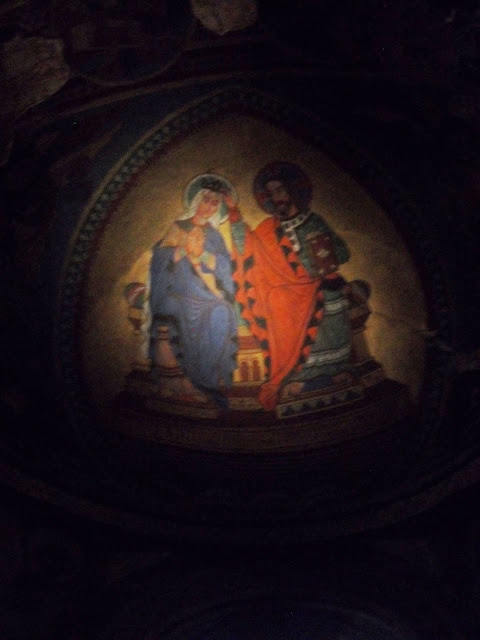Back in Middle Age: discovering the most amazing Medieval monuments in Europe: The church of Notre Dame La Grande
Where is this amazing church?
This amazing church is the Church of Notre Dame La Grande, one of the most beautiful churches in Poitiers.
The French town of Poitiers is a wonderful medieval town also known as the church of 100 bells because the high number of churches in town.
The Church of Notre Dame La Grande is situated in the heart of Poitiers in the old quarter of Monternieuf and it is one of the most beautiful and inspiring.
What is so special about the Church of Notre Dame La Grande in Poitiers?
There are two main aspects of the Church of Notre Dame La Grande that make worthwhile visiting the church.
First is the beautiful facade of the church.
Carved in the first half of the twelfth century, its famous facade recounts episodes of sacred history: from Adam and Eve until the birth of Jesus.
Christ in glory dominates the whole composition.
What it is really unique is the wonderful interior of the church.
Why the interior of the Church of Notre Dame La Grande in Poitiers is so special?
The unique columns in the nave of the church are so special because they conserve the original paintings dating back to middle age times.
They are not just beautiful they are amazing because they are an amazing example of medieval design and style that it still be modern today.
Although the paintings pertain to the medieval times, they are impressively modern and fresh in their design and in their colours.
The atmosphere is unique: you really feel back in medieval times. You can nearly expect to see some a knight dressing is armour appearing from behind one of the beautifully decorated columns.
What is the legend of the miracle of the keys?
The legend that follows make the church of Notre Dame La Grande so special.
The legend goes back in the year 1202, when the English besieged the city of Poitiers.
The mayor's clerk promised to deliver the city to them, on Easter Day, by providing them with the keys to the city in exchange for a large sum of money.
In the night, the clerk went to the room of the mayor to steal the keys, but they had disappeared.
To his dismay, the mayor also realized that the keys had disappeared and he was alarmed because he realized that treason had been committed.
He thus held back his soldiers and went to the church of Notre Dame-la-Grande to request a miracle.
There he discovered the statue of the Virgin Mary holding the keys.
However, during the night, under the ramparts, frightened by the appearances of the Virgin, Saint Hilary and Saint Radegunda, the English killed each other and fled.
You can see this event is represented, in the church, in a stained glass window of the 19th century and on a table of the 17th century.
The church of St-Hilaire-la-Grande of Poitiers preserves three stone statues (the Virgin with the Child, Saint Hilary and Saint Radegunda) which formerly decorated the gate of the moat, the place of the miracle. The legend is not credible from a historical point of view since, in 1202, Poitou formed part of the English duchy of Aquitaine, under the reigns of Henry II and Eleanor of Aquitaine.
The oldest account of the legend can be found in Jean Bouchet's Annals of Aquitaine.
Where I can read more about Tours?
You can read more on our post Exploring Tours - click here to read it.
Where I can read about dolmens and menhirs in France?
Here a list of posts you may find interesting if you are looking for dolmens, menhirs and generally speaking the Celtic heritage in France:
Carnac and the amazing heritage of Brittany
Menhir, ghosts, mysteries and great countryside... where? In Brittany!
What's to see in Plouescat?
A wonderful dolmen in the outskirts of Tours











